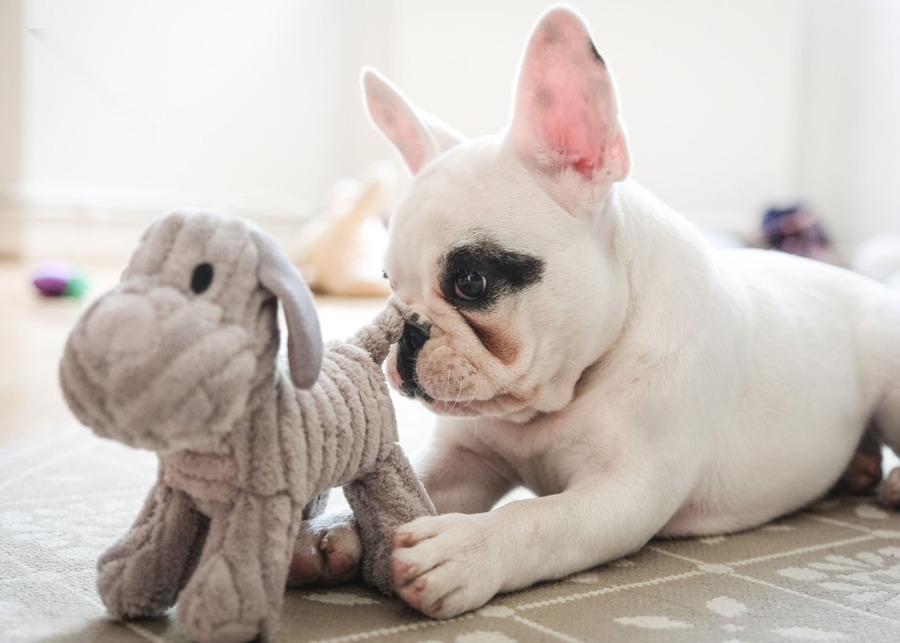Are you a pet brand owner or retail buyer? Finding the right product can be tough. But the real challenge is finding a reliable manufacturing partner who truly understands small dog toys.
The best small dog toys are safe, durable, and engaging, often featuring interactive elements, sustainable materials, and designs that appeal to both dogs and their owners. As a B2B partner, we focus on material safety (like non-toxic TPR), reinforced construction, and market trends to create successful products.
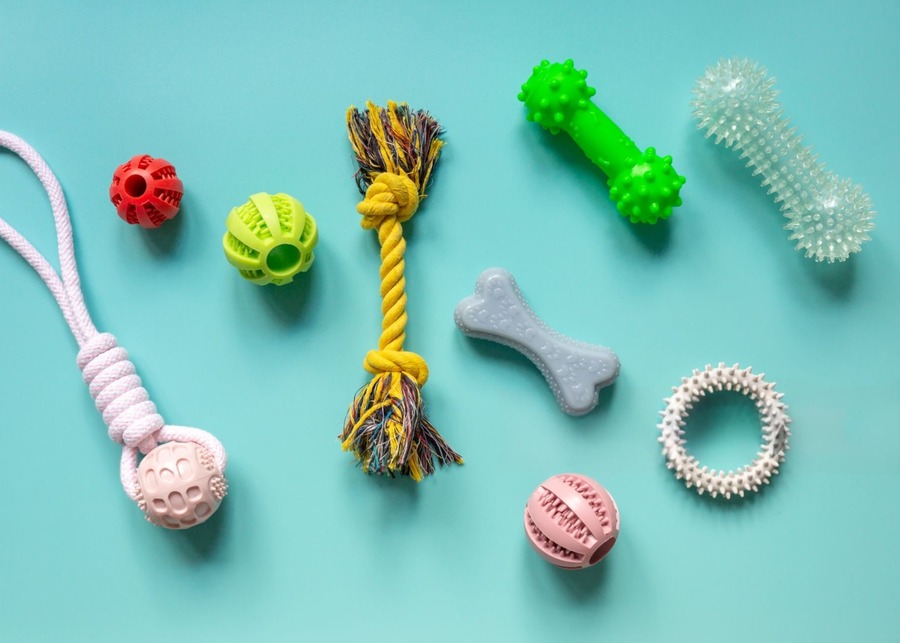
This guide is not just another "best toys" list. It’s an insider’s look into the world of manufacturing, sourcing, and branding toys specifically for small dogs. We’ll walk you through everything from market trends to turning your unique vision into a product ready for the shelf. Let’s dive in and explore how to create toys that small dogs and their owners will love.
What Are the Latest Trends in Small Dog Toys?
Your customers are looking for more than just a simple chew toy. They want products that fit their lifestyle and deepen their bond with their pets. Are you keeping up with what they want?
The latest trends are driven by humanization and wellness. Pet owners want interactive puzzle toys to combat separation anxiety, aesthetically pleasing toys for their homes, and products made from sustainable materials. Curated toy sets and subscription boxes are also becoming very popular with consumers.
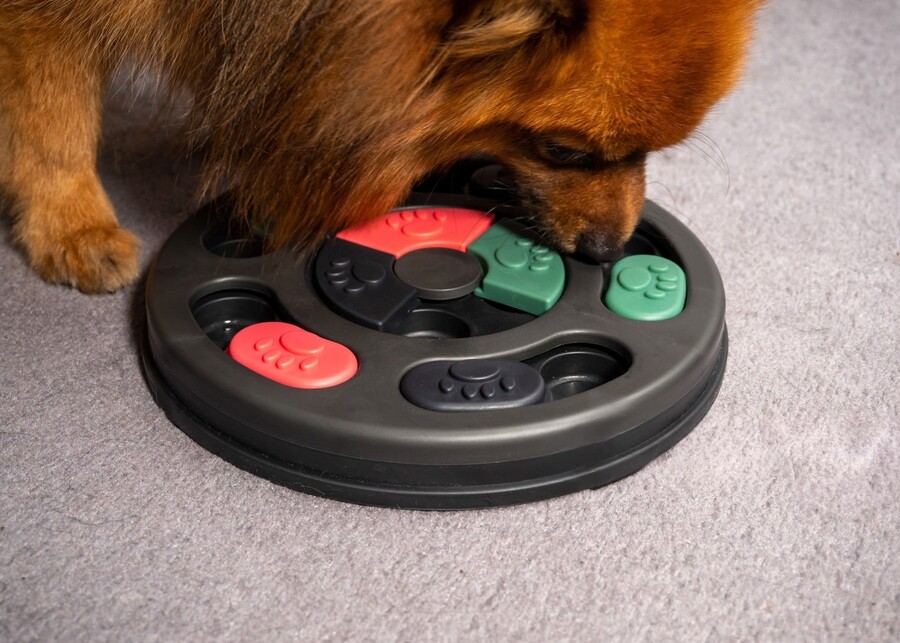
Dive Deeper into Toy Trends
Understanding trends means understanding the "why" behind a purchase. It’s not just about what’s selling, but about the consumer psychology driving those sales.
- Puzzle & Interactive Toys1: These are more than just toys; they are tools. For many pet owners, especially millennials, their dog is a family member. They worry about their dog’s boredom and separation anxiety when they are at work. A good puzzle toy provides mental stimulation and a rewarding challenge. It’s a solution to a real emotional problem for the owner. We help brands design toys with varying difficulty levels to keep dogs engaged and give owners peace of mind.
- Humanization & Aesthetics2: Today’s dog toy must also be a home accessory. Owners want toys that don’t look out of place on their living room floor. More importantly, the toy is a prop for social media. A unique, cute, or funny toy is perfect for an Instagram post, which is free marketing for your brand. We recently worked with a lifestyle brand to create a line of plush toys that matched their home decor color palette, and it was a huge success.
- Sustainable Materials: The demand for eco-friendly products is growing fast. Consumers, particularly in Europe and North America, are actively looking for products made from recycled or natural materials. We source materials like GRS-certified recycled fabrics and natural rubber to meet this demand. Highlighting sustainability on your packaging is no longer a bonus; it’s a key selling point that can attract environmentally conscious buyers.
- Toy Sets & Kits: Curated boxes are a big trend. Think "My First Puppy Kit" or a "Birthday Box." We help clients bundle different types of toys—like a plush toy for comfort, a rubber toy for chewing, and a rope toy for tugging—into a single, attractive package. This increases the perceived value and makes for a perfect gift, driving higher retail prices.
Which Toy Types Do Small Dog Owners Prefer?
Small dogs have big personalities and specific needs. Are you offering a range of toys that caters to their natural instincts for comfort, play, and chewing?
Small dog owners prefer a variety of toys. Plush toys are essential for comfort and gentle play. Squeaky toys satisfy their prey drive. Durable chew toys are necessary for dental health and to manage their chewing energy. Offering a mix of these types is key.
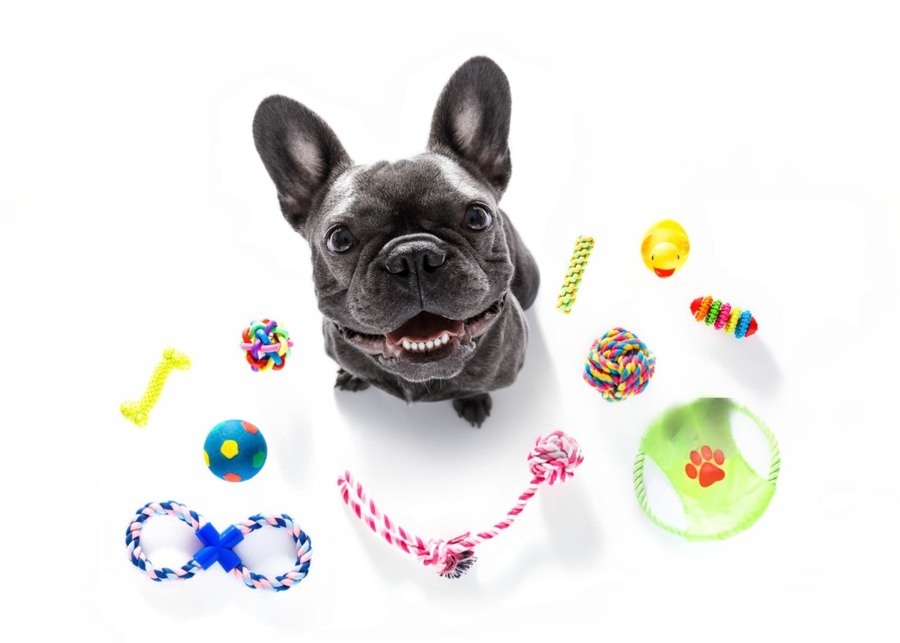
Dive Deeper into Toy Preferences
As manufacturers, we don’t just make toys; we study dog behavior3 to ensure our designs meet the real needs of the end-user—the dog. Small dogs, despite their size, have diverse instincts that different toys can satisfy. Providing the right mix is crucial for a successful product line. For example, a tiny Yorkie and a sturdy French Bulldog are both "small dogs," but their play styles can be vastly different. We advise our clients to build a portfolio that covers the primary behavioral needs:
- Plush & Cuddle Toys: Many small breeds, like Chihuahuas or Cavaliers, are bred for companionship. A soft plush toy can act as a "buddy," providing comfort and security, especially when the owner is away. It satisfies their need to nurture and carry something soft in their mouths. As a company with our own dedicated plush toy factory, this is our specialty. We focus on soft but durable fabrics and secure stitching to create comforting and safe companions.
- Squeaky & Crinkle Toys: The squeak of a toy triggers a small dog’s deep-seated prey drive. That high-pitched sound mimics small prey, making playtime exciting and stimulating. It’s an instant reward that keeps them engaged. We embed squeakers and crinkle material securely within the toy to provide that satisfying sound without creating a safety hazard.
- Durable Chew Toys: Small dogs need to chew just as much as big dogs. It helps keep their teeth clean and gums healthy. For puppies, it relieves teething pain. For energetic breeds like Jack Russell Terriers, a tough chew toy is a great way to release pent-up energy. We use materials like non-toxic TPR and natural rubber to create toys that can withstand surprisingly powerful little jaws.
How Important Is Color and Design for This Niche?
You see a wall of pet toys at a store. What makes a customer pick up your product instead of the one next to it? Could it be something as simple as color?
Color and design are critically important. From a marketing perspective, they create shelf appeal and build brand recognition. From a scientific view, using colors dogs see well, like blues and yellows, can make the toy more engaging for the pet.
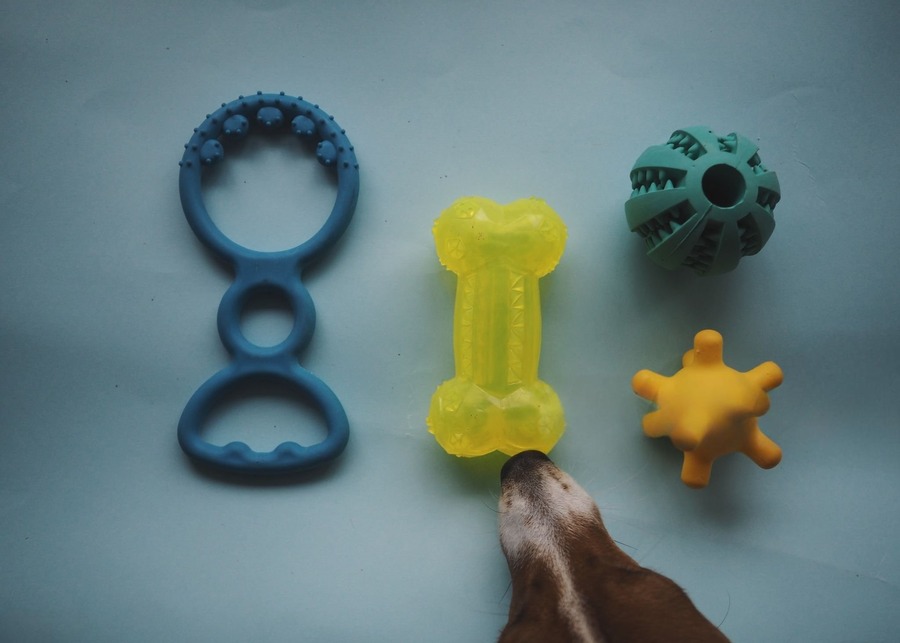
Dive Deeper into Color and Design
When we approach design, we think from two perspectives: the human buyer and the canine user. Both are essential for a product’s success.
- The Science of Canine Vision: It’s a common misconception that dogs see in black and white. They actually see colors, but their spectrum is different from ours. Their world is mostly made of blues, yellows, and shades of gray. Red or green objects likely appear as a brownish or grayish tone. So, when we design a toy for active play, like a fetch ball, we often recommend bright blues and yellows. These colors stand out clearly against the green of grass or the brown of dirt, making it easier for the dog to spot and more fun for them to play with. This scientific approach shows your customers that you’ve thought about their pet’s experience.
- The Art of Marketing and Branding: While the dog cares about function, the human cares about form. The owner is the one with the wallet. A unique design or a signature color palette can become a "visual hammer" for your brand. It makes your products instantly recognizable on a crowded shelf or in an online store. We had a client, a pickleball paddle brand, who wanted to expand into pet toys. We helped them create a plush dog toy that perfectly mimicked the design and bright colors of their best-selling paddle. It was a brilliant move. The toy was not only fun for dogs but also a fantastic brand extension that connected with their existing human customers on an emotional level. It became a conversation starter at the pickleball court.
How to Choose Safe Materials for Small Dog Toys?
As a brand owner, your customers’ trust is your most valuable asset. Are you confident that the materials in your toys are completely safe for their beloved pets?
Choosing safe materials is non-negotiable. Focus on non-toxic, durable options like food-grade silicone, natural rubber, and sturdy fabrics like reinforced Oxford cloth. Always verify that your manufacturing partner complies with international safety standards like REACH and CA Prop 65.
Dive Deeper into Material Safety
Trust is built on transparency. Simply saying a toy is "safe" is not enough for today’s informed B2B buyer. You need to be specific. We believe in educating our clients so they can confidently answer their customers’ questions. This means being open about the materials we use, including their pros and cons. We work with a range of tested, reliable materials and ensure they are appropriate for the specific toy type and intended play style. For small dogs, we must consider both safety and size-appropriateness. Here’s a simple breakdown of some common materials we use:
| Material | Pros | Cons | Best For |
|---|---|---|---|
| Natural Rubber | Very durable, bouncy, all-natural | Can be heavier, higher cost | Durable chew toys, treat-dispensing toys |
| TPR (Thermo-Plastic-Rubber) | Lightweight, floats, flexible, cost-effective | Less durable than natural rubber | Chew toys for moderate chewers, fetch toys |
| Cotton Rope | Great for teeth cleaning, good for tugging | Can be ingested if shredded, not for heavy chewers | Rope toys, gentle tug-of-war |
| Reinforced Oxford Fabric | Stronger than standard plush, tear-resistant | Not indestructible, can still be chewed through | Durable plush toys, crinkle toys |
Beyond the materials themselves, we operate within a framework of safety standards. Our processes are designed to comply with key international regulations like REACH (for Europe) and CA Prop 65 (for California, USA). This isn’t just paperwork; it’s a commitment to safety that protects the pet, the owner, and your brand’s reputation.
What Makes a Toy Durable for Small, Fierce Chewers?
We’ve all seen it: a tiny dog that can shred a new toy in minutes. How can you promise durability when your customers have small dogs with surprisingly strong jaws?
True durability comes from a combination of strong materials and smart construction. It’s not just about the fabric, but about techniques like double-stitched seams, reinforced lining, and internal webbing that protect weak points from small but determined chewers.
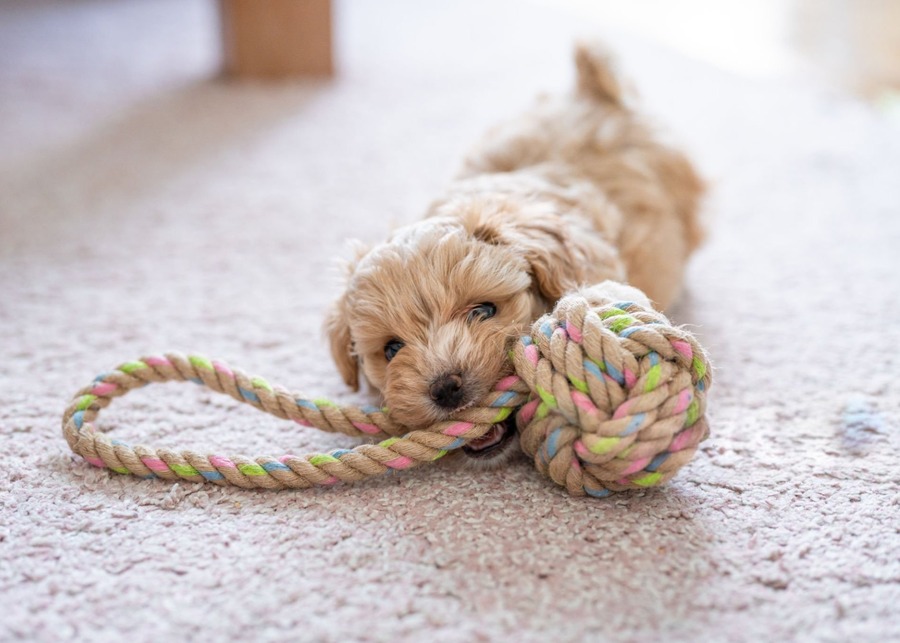
Dive Deeper into Durability
Many people think durability is just about choosing a tough material. While that’s part of the story, the real secret lies in the manufacturing process—the craftsmanship. This is "black box" information that you won’t find on a consumer website, but it’s what separates a high-quality toy from a cheap one. Small dogs like terriers, dachshunds, or corgis are bred to be tenacious. They will find a weak spot and exploit it. We design our toys with this in mind.
Here’s how we build tougher toys:
- Reinforced Seams: This is our first line of defense. Instead of a single line of stitching, we use double-stitched seams, often with heavy-duty thread. This makes it much harder for a dog to rip the toy open at its edges.
- Internal Webbing: For plush toys designed for tougher play, we often sew a layer of strong nylon webbing or durable fabric inside, right behind the main seams. If the dog manages to get through the first layer of stitches, this internal skeleton helps hold the toy together.
- No Small, Hard Attachments: We avoid using hard plastic eyes or noses that can be chewed off and swallowed. Instead, we use high-quality embroidery to create facial features. This eliminates a common choking hazard and failure point.
We describe our toys with these features in mind. For example, we might say, "This toy is designed for small but mighty chewers like terriers. Its reinforced structure can withstand their ‘sweet destruction’ and provide hours of safe play." This kind of specific, vivid language builds confidence and justifies a higher price point.
How to Turn a Unique Toy Idea into a Prototype?
You have a brilliant idea for a new dog toy, one you know will be a hit. But how do you get it from a sketch on a napkin to a real product in your hand?
The journey from idea to prototype is a collaborative process. It starts with your concept, moves to material selection and 3D modeling for refinement, and ends with the creation of a physical sample that you can test and approve before mass production.
Dive Deeper into the ODM Process
We see the prototyping process as a shared journey with our clients. Our role is not just to execute an order; it’s to act as a partner and a consultant, using our experience to refine the idea and make it the best it can be. This is our ODM (Original Design Manufacturing) service in action. Let me walk you through the story of our client, Garrett. He owned a successful brand of pickleball paddles and noticed many players brought their dogs to games. He had a unique idea: create a plush, squeaky dog toy shaped exactly like his best-selling paddle. It was a fantastic brand extension concept.
Here’s how we brought it to life together:
- Step 1: Concept & Sketch: Garrett came to us with his idea and sketches. We sat down (virtually) and discussed his core goals: brand recognition, dog safety, and a premium feel. We talked about the target dog size and play style.
- Step 2: Material Selection: He wanted the toy to look like his paddle but be soft and durable. We proposed a tough, printable fabric for the face of the paddle and a softer, textured plush for the handle. We chose a loud squeaker to make it extra exciting for dogs.
- Step 3: Digital Modeling & Refinement: Our design team created a 3D digital model. This allowed Garrett to see the toy from all angles and request changes before we even touched any physical materials. We adjusted the proportions to make it easier for small dogs to carry.
- Step 4: Sample Creation & Approval: Once the digital model was approved, we created the first physical prototype. We sent it to Garrett. He could feel the quality, test the squeaker, and even give it to his own dog for a "play test." After one small tweak to the stitching, he approved the sample, and we were ready for mass production. This step-by-step, collaborative process ensured there were no surprises and that the final product perfectly matched his vision.
How Does Custom Packaging Enhance Brand Value?
Your product is perfect. But it arrives at the store in a plain plastic bag. Does that packaging communicate the quality and care you put into the toy itself?
Custom packaging is your product’s first marketing message. It’s a silent salesperson that tells your brand story, highlights key features, and grabs a customer’s attention on the shelf, significantly boosting perceived value and brand recall.

Dive Deeper into Packaging
We believe packaging is much more than just a box to protect the product. It’s the first physical interaction a customer has with your brand. Great packaging can elevate a simple product into a premium experience. It justifies a higher price and builds brand loyalty. We help our clients think strategically about their packaging based on their brand identity and retail environment.
- Telling Your Brand Story: Is your brand fun and playful? Or is it more natural and eco-conscious? Your packaging should reflect that. A colorful box with fun illustrations tells a different story than a simple recycled cardboard tag tied with jute string. We help you choose the materials, colors, and graphics that communicate your brand’s unique personality.
- Designed for Retail: Where will your product be sold? The answer changes the ideal packaging. For a supermarket peg hook, a simple, sturdy backing card is perfect. It displays the product clearly and is cost-effective. For a boutique pet store shelf, a full-color window box creates a more premium, gift-like impression. We can design various types, including backing cards, hangtags, color boxes, and even custom-printed cloth bags.
- A Practical Value-Add: Smart packaging design isn’t just about looks; it’s about saving you money. International shipping costs are heavily influenced by volume. We are experts at designing packaging that is both attractive and efficient. By carefully arranging products and minimizing empty space, we can often reduce the overall carton size. For our clients shipping thousands of units, this seemingly small optimization can lead to thousands of dollars in saved freight costs. It’s a practical benefit that directly impacts your bottom line.
Conclusion
Sourcing and manufacturing toys for small dogs is about understanding the details. It’s about safety, durability, trends, and branding. We are more than a manufacturer; we are your partner in this process.
From a custom design idea to a one-stop sourcing solution, we are here to help your brand succeed. Let’s work together to create amazing products for pets and their people.
-
Explore how puzzle toys can enhance your dog’s mental stimulation and alleviate separation anxiety. ↩
-
Discover the impact of aesthetics on pet toy choices and how it can boost your brand’s appeal. ↩
-
Understand the connection between dog behavior and toy selection to better cater to small dog owners. ↩

